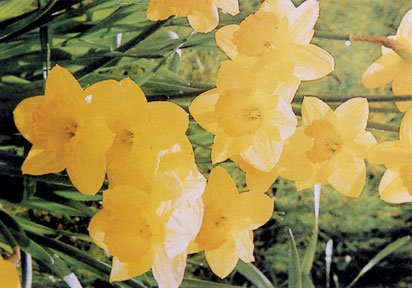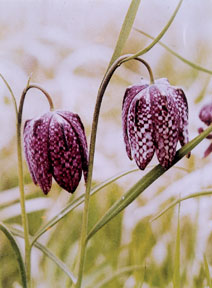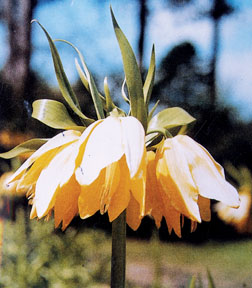Shakespeare's rich legacy of floral passages
by Gwen Herat at Shakespeare Birthplace, Stratford-Upon-Avon
 |
|
Daffodils, 'Daffodils that come before
the swallows dare and take, The winds of March with beauty',
The winter's Tale, Act. IV, scene IV |
This summer, the flowers and burgeon are in full swing in an array of
technicolour. The sun is smiling up in heavens as the gentle breeze
caresses my brow. Virtually, I have visited the Shakespeare Centre
annually browsing through new books and play presentations. This is time
I opted to leave these alone and decided to stroll down the sprawling,
laden beds. At the moment, they are a pristine glory. As I keep moving
around this nature's luxury, I intend to study some flowers that I do
not find back home in Sri Lanka, The flowers I would like to share about
with my horticulture friends. Shakespeare celebrates their beauty in his
plays. He pays homage to their wondrous impact on humanity and how they
announce each passing season. His favourite season was Spring.
At the moment I am relaxing under a plant whose origin dates back to
the time Shakespeare planted it. It has been cultivated over and over
again down the centuries. The plant is unique and so is the Shakespeare
Trust that takes so much pains to maintain its lifeline.
An instinct country-man, an essential Englishman, he was influenced
by his native Warwickshire that reflects through most of his plays. He
was impressed immensely by his early environment as his parents came
from farming families in the adjoining country, a few miles off his
birthplace, Stratford-Upon-Avon. He praised his River Avon as well as
Welcombe on the rising ground looking across the river valley. It was on
all these sites that the young Shakespeare learned about flowers, and
wildflowers, as well as herbs. He was to remember them with adoration in
his later years and marvel them in his plays and sonnets.
Now, I move across to Anne Hathaway's cottage garden brimming with
beautiful foliage mixed with flowers scenting the air wildly in the
gentle breeze. No wonder the Bard met Anne in the midst of this magical
environment.
 |
|
Adonis flower, 'The flowers are sweet,
their colours fresh and trim', From Venus and Adonis |
'How sweet the moonlight sleep upon this bank
Here will we sit, and let the sounds of music
Creep in our ears, soft stillness of the night
Become the touches of sweet harmony.'
Merchant of Venice Act 5, Sc. 1
Shakespeare mentioned the seasons in his plays to dot them with the
relevant seasonal flowers. Sometimes the flowers indicated the moods of
his characters with Ophelia from Hamlet being the best example.
'There is a willow grows aslant the brrok
That shows his hoar leaves in the glassy stream
There with fantastic garlands did she come
Of Crowflowers, Nettle, Daisies and Long Purples
That liberal sheperds gave a grosser name'....
Hamlet, IV, 7.
Crow Imperial
This flower is mentioned only once when Perdita links it with 'bold
Oxlips'. An exceptionally beautiful flower in yellow-gold, it has a tall
leafy stalk with a cluster of beautiful drooping flowers. I can see a
mass of them just few yards away. It is a summer flower and therefore,
at its best in April.
Daffodil
 |
|
Crown Imperial, 'Bold Oxlips and the
Crown Imperial'
The winter's Tale - Act. IV, scene IV |
Yet again Shakespeare uses Perdita to involve the daffodil which
symbolises joy and gladness. Even the winds of March cannot daunt the
daffodil. Daffodils are found in the woodlands and meadows as a prelude
to the arrival of the swallows. Winterís Tale is laden with daffodils as
Autolycus dialogue it.
Long Purple
A very unusaul flower that made me confused like many others who
think it to be an early orchid in the woods and meadows while some think
it to be a wild arum because of its stout spike-like flowers projecting
upwards. I think the Long Purple is more a relative of the Arum Lily. It
has a lovely shading of purple dissolving into cream. Shakespeare
gloryfies this flower in Hamelet.
Adonis Flower
Shakespeare showers praise on this strikingly different flower in
Venus and Adonis. It is a purple flower chequered in white giving it a
fabric look. It is commonly found in woodlands in early spring and
withers off quickly after flowering.
'The flowers are sweet, their colours fresh and trim' (Venus and
Adonis (love dpoem).
|

